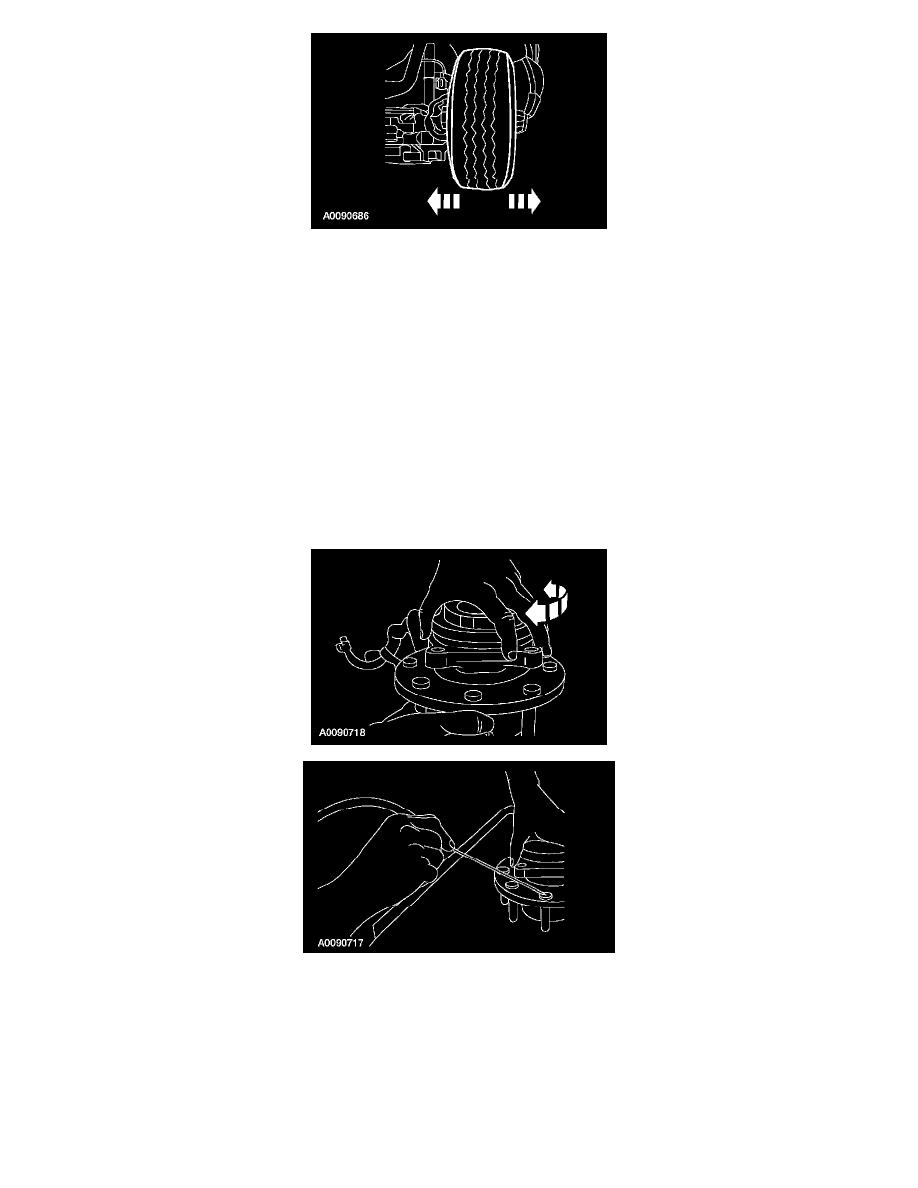F 150 Heritage 4WD Pickup V8-5.4L SOHC VIN Z Bi-fuel (2004)

10. Carry out the following steps for the wheel bearing endplay:
^
Push the wheel inward at the 6 o'clock position.
^
Set the dial indicator to zero.
^
Pull the wheel outward at the 6 o'clock position.
^
Record the measurement.
^
Repeat this step 3 to 5 times.
-
If the wheel bearing endplay is greater than 0.13 mm (0.005 inch), install a new wheel bearing.
-
If the wheel bearing endplay is less than 0.13 mm (0.005 inch), the wheel bearing is within specification. Go to the next step.
11. Remove the wheel hub.
12. Carry out the following steps for the wheel bearing visual inspection:
^
With the wheel hub on a bench, visually inspect the bearing.
^
Check for any rust, wear or damage.
^
Check the condition of the rollers.
^
Make sure there is a small amount of grease on the bearing.
-
If the wheel bearing has rust, is worn or damaged, install a new wheel bearing.
-
If the wheel bearing looks OK, go to the next step.
13. Carry out the following steps for the wheel bearing roughness inspection:
^
With the wheel hub on a bench, rotate the outer flange of the wheel bearing while applying downward pressure.
-
If the wheel bearing rotates freely, without roughness, check the bearing for noise.
-
If the wheel bearing does not rotate freely, install a new bearing.
^
Rotate the outer flange of the wheel bearing while applying downward pressure. Using a stethoscope, check the wheel bearing for noise.
-
If the wheel bearing rotates freely, without noise, the wheel bearing is OK. Conduct a diagnosis on other suspect components or systems.
-
If the wheel bearing does not rotate without noise, install a new bearing.
14. Install the wheel hub.
